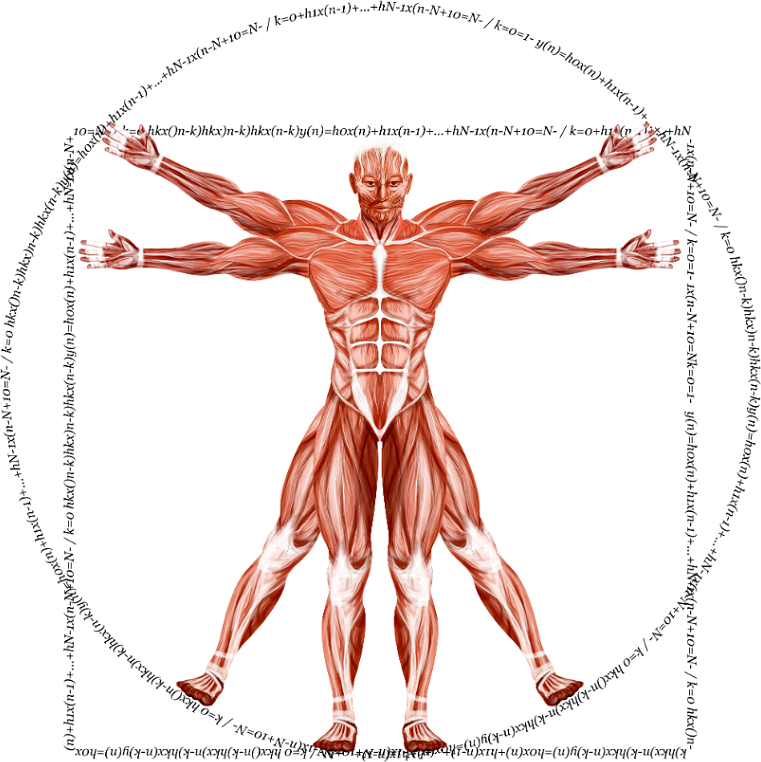Science-Backed Arm & Shoulder Workout for More Muscle
Everything you need to know about arm and shoulder training optimization

Key Takeaways
- You won’t grow without progression—increase weight or reps each week (double progression method).
- Your isolation work needs volume—hit arms with 8-12 sets weekly to see real changes.
- You can use BFR for a secret weapon—train with 20-30% of your 1RM for max growth.
- Your arms need both compound and isolation work—combine heavy lifts with detail-focused movements.
- You must protect your joints—warm-up, use smart exercise selection, and recover properly.
Want to get stronger, bigger arms and shoulders without wasting time?
In this expert review, we analyze, critique, and expand on 3DMJ Podcast's training methods for arm and shoulder development. Our team, including a training expert with 20+ years of gym experience, evaluates their advice to ensure it’s practical, effective, and backed by science.
Why this guide stands out:
- Fact-checked by experts with 300+ published articles on muscle growth.
- Lesser-known training tweaks to boost strength and reduce injury risk.
- Custom workout routine built on 3DMJ Podcast’s most effective strategies.
Want a leaner, stronger physique with balanced arms and shoulders? Keep reading to get a clear, expert-backed training plan.
Related:
- 20-Min Shoulder Workout for Big Delts (Top 3 Exercises)
- 3 Shoulder Hypertrophy Workouts (15 Best Exercises)
- 3 Arm Workouts for Muscle Hypertrophy (9 Best Exercises)
In a Nutshell: Growth is in the Details
You need to protect your joints for long-term success. Use smart modifications like landmine presses if overhead work hurts, and never skip your warm-up. Recovery is just as important as training—48 hours between arm sessions is key!
Your gains depend on consistency and execution. Stick to a plan, track your progress, and keep pushing your limits. Growth takes time, but with the right strategy, you’ll build strong, defined arms that stand out!
| Key Concept | Main Insight |
|---|---|
| Smart volume | 8-12 weekly sets for best arm and delt development. |
| Protect your joints | Modify pressing movements to avoid pain. |
| Time under tension works | Slow negatives = more muscle activation. |
| Progression is non-negotiable | Increase reps/weight weekly to keep growing. |
| Rest is essential | 48-hour gap between arm days prevents overtraining. |
| Mix it up | BFR, supersets, and tempo training can break plateaus. |
The Evolution of Arm Training
Arm training has transformed significantly over the years. Today, you need to consider factors such as exercise selection, volume, and recovery. This guide dives deep into the latest strategies for effective arm training, ensuring you maximize growth while minimizing injury risk.

In the past, many lifters approached arm training with a straightforward mindset. You completed your big lifts—squats, deadlifts, and bench presses—and then added a few sets of curls and tricep extensions. This method often resulted in suboptimal arm development. It became clear that to achieve the desired arm size and aesthetics, a more focused approach was necessary.
Modern training emphasizes the importance of isolation movements, variety in exercises, and tailored programming. It’s not just about adding arms at the end of a session. Instead, effective arm training requires thoughtful planning and execution.
Shoulder Pain Management Strategies
Shoulder pain is a common issue for many lifters. When training arms, it's essential to prioritize joint health. Ignoring pain can lead to long-term injuries and hinder your progress.
- Modify Your Range of Motion: If overhead pressing causes discomfort, consider reducing the range of motion or switching to dumbbells. This allows for a more natural movement pattern.
- Use Landmine Presses: Landmine presses provide stability and can alleviate discomfort while still engaging the shoulder muscles effectively.
- Incorporate Lateral Raises: These can help build shoulder volume without putting excessive strain on the joint.
These strategies allow you to continue training while managing pain. Prioritizing recovery and joint health is crucial to maintain long-term progress.
Understanding Volume and Tension
Volume is a critical factor in muscle growth. However, it's not just about the number of sets and reps. The tension placed on the muscles also plays a significant role. Balancing volume and tension ensures that you’re stimulating muscle fibers effectively.
- Higher Volume for Isolation: Isolation exercises often require higher volume to achieve the same growth as compound lifts. Aim for 8-12 sets per week for arms.
- Progressive Overload: Gradually increase the weight or reps to maintain tension on the muscles. This progression is essential for continued growth.
- Recovery Considerations: Ensure adequate recovery time between sessions. Overtraining can lead to fatigue and decreased performance.
Isolation vs. Compound Exercises
Understanding the difference between isolation and compound exercises is vital for effective programming. Compound exercises involve multiple joints and muscle groups, while isolation exercises focus on one muscle group.
- Compound Exercises: These should form the backbone of your routine. They build overall strength and allow for heavier loads, which is crucial for muscle growth.
- Isolation Exercises: Use these to target specific muscles, like the biceps and triceps, for detail and definition. They help in sculpting the arms and delts.
Incorporate both types of exercises into your training plan. This balanced approach allows you to maximize muscle hypertrophy while ensuring comprehensive development.
Progression Techniques for Isolation Exercises
Progression is key in any training regimen. For isolation exercises, there are several effective techniques.
- Double Progression Method: Aim to increase either the weight or the number of reps each week. Once you reach the top of your rep range, increase the weight.
- Time Under Tension: Slow down your reps to increase the time your muscles are under tension. This can lead to greater muscle fatigue and growth.
- Intensity Techniques: Incorporate techniques like drop sets or super sets to push your muscles beyond their normal limits.
By implementing these techniques, you can ensure that your isolation exercises remain challenging and effective.
Selecting Effective Exercises
Choosing the right exercises is crucial for arm development. Isolation exercises are particularly effective because they target specific muscles without involving other muscle groups. This precision allows you to focus on form and technique.
Start with movements that feel natural to you. For example, if you connect well with preacher curls, incorporate them into your routine. This personal connection can enhance muscle engagement and growth.
Consider your goals when selecting exercises. If you aim to develop the long head of the biceps, prioritize incline dumbbell curls. For the triceps, focus on movements that emphasize the stretch, such as overhead tricep extensions. These targeted exercises can significantly improve muscle definition.
- Biceps: Include variations like concentration curls and hammer curls.
- Triceps: Utilize skull crushers and tricep pushdowns.
- Deltoids: Incorporate lateral raises and face pulls.
Always listen to your body. If an exercise causes discomfort, don’t hesitate to modify or replace it. The goal is to build strength without risking injury.
Utilizing BFR in Arm Training
Blood Flow Restriction (BFR) training is an innovative method to enhance muscle growth. By partially restricting blood flow to the muscles, you can achieve significant hypertrophy with lighter weights. This technique is especially beneficial for arm training.
To implement BFR, use bands or cuffs around the upper arms. Aim for a pressure level that feels snug but not painful. Perform your exercises with 20-30% of your one-rep max for higher reps (15-30). This method maximizes muscle fatigue and growth potential.
Incorporate BFR into your routine once or twice a week. It can be a game changer for those looking to break through plateaus. However, ensure you are cleared for this type of training, especially if you have any pre-existing conditions.
Psychological Aspects of Training
Your mindset plays a vital role in your training success. Staying motivated and focused can significantly impact your progress. Set clear, achievable goals to maintain your enthusiasm.
Visualize your desired outcomes. Imagine how your arms will look and feel as you progress. This mental imagery can boost motivation and help you push through challenging workouts.
Additionally, consider journaling your workouts. Tracking your progress can provide a sense of accomplishment and keep you accountable. Celebrate small victories along the way to maintain a positive mindset.
Common Misconceptions in Training
Many misconceptions exist about arm training that can hinder your progress. One common myth is that you need to perform countless sets for optimal growth. In reality, quality trumps quantity.
Focus on effective sets with proper form rather than just increasing numbers. Another misconception is that isolation exercises are ineffective. While compound movements are essential, isolation exercises play a crucial role in sculpting and defining specific muscles.
Lastly, some believe that training arms every day will lead to faster growth. However, muscles need time to recover. Aim for 48 hours of rest between arm workouts to allow for optimal recovery and growth.
The Importance of Consistency
Consistency is the cornerstone of any successful training program. Regularly showing up for your workouts is more important than any specific exercise or routine. Establish a schedule that fits your lifestyle and stick to it.
Even on days when motivation is low, commit to a short workout. This consistency builds discipline and reinforces positive habits. Over time, these small efforts accumulate into significant results.
Remember, progress takes time. Be patient with yourself and trust the process. Focus on improving your technique, adding weight, or increasing reps gradually. This long-term commitment will yield impressive arm development.
Integrating New Techniques

As you evolve in your training, integrating new techniques can enhance your arm development. Experimenting with different methods can break through plateaus and keep your workouts fresh.
One effective approach is to incorporate supersets. This technique involves performing two exercises back-to-back with minimal rest. For example, pair bicep curls with tricep extensions. This not only saves time but also increases the intensity of your workout.
Another technique is to utilize pre-exhaustion. This method involves performing an isolation exercise before a compound movement. For instance, do lateral raises before overhead presses. This primes the muscles, leading to greater fatigue and activation during the compound lift.
Consider integrating tempo training as well. Slowing down your reps, especially on the eccentric (lowering) phase, increases time under tension. This can lead to greater muscle growth and strength gains.
Finally, don't shy away from incorporating functional movements. Exercises like kettlebell swings or battle ropes can enhance your overall conditioning, which translates to better performance in your arm workouts.
Maintaining Joint Health
Joint health is essential for longevity in your training. Prioritizing joint care helps prevent injuries and ensures consistent progress. Here are several strategies to maintain joint health while training your arms.
- Warm-Up Properly: Always start with a thorough warm-up. Focus on dynamic stretches and mobility exercises to prepare your joints.
- Incorporate Joint-Supporting Supplements: Consider supplements like glucosamine and omega-3 fatty acids. These can support joint health and reduce inflammation.
- Implement Recovery Techniques: Use foam rolling and stretching to alleviate tightness. Proper recovery techniques can enhance your flexibility and reduce injury risk.
- Listen to Your Body: If you feel pain, adjust your routine. Ignoring discomfort can lead to serious injuries.
By integrating these strategies, you can protect your joints and maintain a sustainable training regimen. Remember, a healthy joint is a key to achieving your arm development goals.
Conclusion
In summary, arm training is an evolving art that requires a thoughtful approach. By understanding the principles of volume, tension, and exercise selection, you can maximize your results.
Incorporate new techniques, prioritize joint health, and stay consistent. Each aspect plays a crucial role in your overall development. Embrace the journey, and remember that progress takes time.
The Ultimate Arm and Shoulder Workout for Strength and Size
Building bigger, stronger arms and shoulders isn’t just about throwing in a few extra curls at the end of a workout. It requires strategic volume, progressive overload, and smart exercise selection—and that’s exactly what this program delivers. Inspired by 3DMJ Podcast, this science-backed routine focuses on compound lifts for strength, isolation for detail, and structured recovery to maximize growth while keeping your joints healthy.
Overview
- Ideal for: Lifters who want stronger, well-defined arms and shoulders without overtraining.
- Equipment needed: Barbells, dumbbells, cables, resistance bands (optional).
- Focus: Progressive overload, balanced volume (8-12 sets per week per muscle), and joint-friendly modifications.
- Training frequency: 2-3 days per week, allowing at least 48 hours between arm-focused sessions.
Workout Split
- Day 1: Heavy Compound Focus (Strength & Size)
- Day 2: Isolation & Volume (Definition & Detail)
- Day 3: Shoulder & Stability (Delts & Joint Health)
Day 1: Heavy Compound Focus
| Exercise | Sets | Reps | Rest |
|---|---|---|---|
| Close-Grip Bench Press | 4 | 5-8 | 90s |
| Weighted Dips | 3 | 6-8 | 90s |
| Barbell Overhead Press | 4 | 5-8 | 90s |
| Barbell Curls | 3 | 8-10 | 60s |
| Overhead Triceps Ext. | 3 | 10-12 | 60s |
Pro tips:
- Keep elbows tucked on close-grip bench for maximum triceps activation.
- Use weighted dips if bodyweight feels too easy—progression is key.
- Rest longer on heavy lifts to maintain strength throughout sets.
Day 2: Isolation & Volume
| Exercise | Sets | Reps | Rest |
|---|---|---|---|
| Preacher Curls | 3 | 10-12 | 45s |
| Rope Triceps Pushdowns | 3 | 12-15 | 45s |
| Incline Dumbbell Curls | 3 | 10-12 | 45s |
| Skull Crushers | 3 | 10-12 | 45s |
| Lateral Raises | 3 | 12-15 | 30s |
Pro tips:
- Slow down the negative (lowering) phase to maximize muscle tension.
- Use a lighter weight with strict form on lateral raises—don’t cheat!
- Superset preacher curls and rope pushdowns for a brutal pump.
Day 3: Shoulder & Stability
| Exercise | Sets | Reps | Rest |
|---|---|---|---|
| Landmine Press | 4 | 8-10 | 60s |
| Face Pulls | 3 | 12-15 | 45s |
| Rear Delt Flys | 3 | 12-15 | 45s |
| Hammer Curls | 3 | 10-12 | 45s |
| BFR Bicep Curls | 3 | 15-20 | 30s |
Pro tips:
- Landmine press reduces joint stress—perfect for long-term shoulder health.
- Face pulls help balance out front-heavy pressing work.
- BFR (Blood Flow Restriction) curls maximize growth with lighter weights.
Notes on Program Execution
- Train with intent—each rep should be controlled and focused on mind-muscle connection.
- Progressive overload is key—increase reps or weight every 1-2 weeks.
- Rest at least 48 hours between arm-heavy days to prevent overtraining.
- Modify movements if needed—use neutral grips and landmine presses for shoulder health.
Final Thoughts: Smart Training = Bigger Gains
Bigger, stronger arms and shoulders don’t happen by accident—they come from progressive overload, smart volume, and balanced recovery. This routine ensures you get the best of all worlds: compound lifts for strength, isolation for detail, and joint-friendly variations for longevity.
Want to automate this workout and more? Put your progress on autopilot with Dr. Muscle AI. Try it free.
Expert Corner: Proven Strategies & Hidden Gems
Practical Applications
- Schedule arm training for max results – Don’t just squeeze in arm work randomly. Plan 8-12 sets per week split across 2-3 sessions to allow for recovery and growth.
- Modify movements to protect your joints – If overhead presses cause pain, switch to landmine presses or neutral-grip dumbbells for a safer alternative. Listen to your body!
- Use progressive overload every session – Add 1-2 reps or slightly increase weight each week to keep muscles adapting. Small, consistent progress leads to big results over time.
- Try BFR for high-impact training – Use 20-30% of your 1RM with 15-30 reps per set to maximize muscle fatigue without stressing your joints. Perfect for adding volume!
- Mix compound and isolation work wisely – Start workouts with heavy compound lifts (dips, close-grip bench), then finish with isolation (curls, skull crushers) for muscle definition.
- Recovery is part of training – After an intense session, take 48 hours off before hitting arms again, and use stretching/foam rolling to stay pain-free.
Examples
- Arm Day Plan: Close-grip bench (3x8), dips (3x10), preacher curls (3x12), rope pushdowns (3x15), hammer curls (2x15).
- Shoulder-Friendly Upper Body Day: Landmine press (4x10), lateral raises (3x12), rear delt flys (3x15), face pulls (3x12).
Fact-Check of Key Points
- 8-12 sets per week is ideal for arm growth – While this is a solid general guideline, optimal volume varies per person based on genetics, recovery ability, and training intensity. Some lifters may need as few as 6 sets or as many as 20+ to see progress.
- BFR training is a game changer for hypertrophy – Yes, BFR can boost muscle growth with lighter weights, but it’s not a magic bullet. It works best as a supplement to traditional training, not a replacement. Also, proper technique and pressure control are crucial—too tight or too loose, and it won’t work effectively.
- Compound lifts should form the backbone of your routine – True for strength and overall development, but arms can still grow with a focus on isolation work. Some bodybuilders achieve massive arms without prioritizing compound pressing—it depends on your training goals.
- Training arms daily won’t lead to faster growth – Generally correct, but some advanced lifters benefit from high-frequency training with lower volume per session. If recovery is managed well, 3-4 days of arm work per week can be effective.
- Progressive overload means increasing weight or reps weekly – A great rule of thumb, but progress isn’t always linear. Some weeks, focusing on better form, tempo, or mind-muscle connection is just as valuable as adding weight.
More Little-Known Tips for an Effective Arm and Shoulder Workout Routine
- Train biceps with different elbow positions – Don’t just stick to standard curls! Use incline curls (arms behind body), preacher curls (arms in front), and standing curls (neutral position) to hit all angles of the biceps for full development.
- Use slow negatives to maximize growth – Lower the weight for 3-5 seconds on curls, tricep extensions, and lateral raises. More time under tension = more muscle activation without needing heavier weights.
- Hit rear delts as much as front delts – Most lifters overwork the front delts with pressing and ignore the rear delts. Add face pulls, reverse flys, and rear-delt-focused lateral raises to balance out your shoulders.
- Start with the hardest exercises first – Your heaviest lifts (like close-grip bench or weighted dips) should come early when you’re fresh. Isolation exercises (like curls and pushdowns) should come later when strength matters less.
- Experiment with paused reps for triceps – On skull crushers, dips, or close-grip bench, pause for 1-2 seconds at the bottom of the movement before pressing up. This increases tension and forces your triceps to work harder.
- Train shoulders with different rep ranges – Heavy 5-8 rep sets work for pressing movements, but lateral raises and rear delt work respond better to 12-20 reps with controlled form.
- Use mechanical drop sets for burnout – Instead of switching weights, change the movement slightly. Example: Go from seated lateral raises to standing raises, then finish with partial reps—brutal but effective!
Benefits of Combining Arm and Shoulder Exercises
Pairing arm and shoulder exercises in the same routine saves time, improves muscle balance, and enhances overall upper-body strength. Since many shoulder exercises already recruit the triceps, training them together maximizes efficiency and recovery.
- Stronger Pressing Movements: A well-developed shoulder and triceps combo enhances bench press and overhead press performance.
- Balanced Muscle Growth: Many lifters overtrain the front delts while neglecting the rear delts and arms. A combined approach ensures better symmetry and proportion.
- Joint Health & Stability: Strengthening the arms and shoulders together supports better shoulder stability and injury prevention, especially for pressing movements.
- Time-Saving Workouts: Since both muscle groups work together in compound movements like overhead presses and dips, combining them reduces overall training time.
Tips for Getting the Most Out of Your Workouts
- Prioritize progressive overload – Add weight, reps, or intensity techniques every 1-2 weeks to ensure continuous gains.
- Start with compound lifts – Knock out overhead presses, dips, and close-grip bench first while energy levels are highest.
- Use controlled reps – Slow negatives (3-5 seconds) on curls and triceps extensions increase muscle activation and growth.
- Keep shoulders healthy – Avoid excessive overhead pressing and balance pressing with pulling movements like face pulls and rear delt flys.
- Track your progress – Whether it’s weight lifted, reps completed, or time under tension, logging workouts ensures measurable improvements.
Maximizing arm and shoulder training is all about smart programming and consistency. Whether you're looking for size, strength, or endurance, dialing in volume, rest, and technique makes all the difference.
Science of Maximizing Arm and Delt Development
Optimizing arm and deltoid muscle hypertrophy and strength requires a strategic approach to resistance training. Research indicates that factors such as load intensity, training frequency, repetition duration, and advanced techniques significantly impact muscle growth and strength adaptation. Recent systematic reviews and meta-analyses provide valuable insights into the most effective strategies for maximizing gains in these muscle groups.
Key Findings from Systematic Reviews and Meta-Analyses
- Training Load and Intensity
High-load resistance training (≥65% of one-repetition maximum) tends to produce superior strength gains compared to lower loads, while hypertrophy can be achieved across a range of loading intensities (Schoenfeld et al., 2016). Additionally, multi-joint exercises are recommended for maximizing efficiency (Pawlina et al., 2022). - Training Frequency
Higher resistance training frequency (twice or more per week per muscle group) is associated with greater hypertrophic outcomes than training once per week (Schoenfeld et al., 2016). - Repetition Tempo and Muscle Action
Moderate eccentric duration (2–4 seconds) combined with fast concentric action appears optimal for hypertrophy and strength, while excessively slow reps (>10 seconds) may hinder muscle growth (Moreno-Villanueva et al., 2021). - Advanced Resistance Training Techniques
Methods such as blood flow restriction, drop sets, and accentuated eccentric loading can provide an additional hypertrophic stimulus, particularly for advanced lifters (Krzysztofik et al., 2019).
Practical Applications of Science
- Train each muscle group at least twice per week for superior hypertrophic results.
- Use heavier loads (>65% 1RM) for strength gains and a mix of moderate and high loads for hypertrophy.
- Incorporate controlled eccentric phases (2-4 seconds) with explosive concentric movements for optimal adaptations.
Scientific Conclusion
A combination of high-load resistance training, increased training frequency, optimal repetition tempo, and strategic advanced techniques leads to the most effective gains in arm and deltoid muscle hypertrophy and strength. Tailoring these factors based on individual goals and experience levels can further enhance training efficiency.
My Opinion on the Best Arm and Shoulder Workout Routine
I think most people waste too much time on the wrong exercises when training arms and shoulders. I see lifters doing endless light lateral raises and pump-style bicep curls, thinking it’ll build serious size. News flash: it won’t. If you want bigger arms and stronger shoulders, you need to lift heavier and prioritize progression—especially on compound movements like dips, close-grip bench, and overhead presses.
Some argue that you can build arms with isolation work alone, and while it’s true that isolation exercises refine muscle shape and add detail, they shouldn’t be your main focus. You can’t curl your way to huge arms—if you’re not pushing serious weight on triceps-heavy presses, you’re missing out on major growth. And for shoulders? Heavy overhead pressing beats high-rep fluff work every time.
That said, I do believe in smart programming—you can’t just smash heavy weights without paying attention to joint health and recovery. Overhead pressing every session? Bad idea. Balancing heavy work with higher-rep isolation movements like lateral raises, face pulls, and incline curls is key to long-term progress. But let’s be honest—if you’re avoiding big lifts and just chasing a pump, you’re leaving gains on the table.
I’d rather have someone focus on strength and progression than spend an hour doing random shoulder raises and hoping for the best. Lift heavy, train smart, and stop overcomplicating it.
Final Thoughts on an Effective Arm and Shoulder Workout Routine
Building strong, defined arms and shoulders isn’t about doing endless reps of curls and lateral raises—it’s about smart programming, progression, and balancing compound and isolation work. If you’re not increasing weight or reps over time, you leave gains on the table. And let’s not forget joint health and recovery—training hard is excellent, but training smart keeps you injury-free and consistent.
The best approach? Focus on heavy, progressive compound lifts, mix in isolation for detail, and train with purpose. Don’t overcomplicate it—track your lifts, push yourself, and recover properly. If you’re guessing every workout, you’re wasting time and effort.
That’s where Dr. Muscle comes in. This app automates progressive overload, optimizes your workouts, and adapts to your progress—so you don’t have to think about it. It’s like having a personal trainer in your pocket. Try it out with a free trial here, and start training smarter today.
FAQ
What are the best exercises for arm and shoulder development?
The best exercises for arm and shoulder development include compound movements like close-grip bench press, dips, and overhead presses for strength, combined with isolation exercises like preacher curls, skull crushers, lateral raises, and face pulls for detail and muscle definition. A mix of both ensures balanced growth and optimal results.
How often should I train my arms and shoulders each week?
Arms and shoulders should be trained 1-2 times weekly with at least 48 hours of rest between sessions. This allows for proper recovery and muscle growth while preventing overtraining and joint strain.
What is the ideal number of sets and repetitions for arm and shoulder workouts?
The ideal volume for arm and shoulder workouts is 8-12 sets per week per muscle group. Lower reps (5-8) work best for heavy compound lifts, while higher reps (12-20) are more effective for isolation movements like lateral raises and curls.
How can I prevent shoulder pain during arm and shoulder exercises?
To prevent shoulder pain during arm and shoulder exercises, modify pressing movements, use landmine presses for stability, and prioritize joint-friendly movements like lateral raises and face pulls. Proper warm-ups, mobility work, and avoiding excessive overhead pressing can also reduce strain.
Is performing compound or isolation exercises for arm and shoulder growth betterthe ?
Both compound and isolation exercises are essential for arm and shoulder growth. Compound movements build strength and muscle mass, while isolation exercises add detail and target weaker muscle areas. A combination of both ensures balanced development.
Can I train my arms and shoulders on consecutive days?
Training arms and shoulders on consecutive days is not recommended because these muscles need at least 48 hours to recover. Overlapping sessions can limit strength gains and increase the risk of injury due to inadequate recovery time.
How can I prevent injuries while training arms?
To prevent injuries while training arms, use proper form, warm up thoroughly, and avoid excessive volume. Smart modifications, such as reducing the range of motion on painful movements and incorporating joint-friendly variations like neutral-grip presses, can also help maintain long-term health.
Is it necessary to lift heavy weights for arm growth?
Lifting heavy weights is not always necessary for arm growth, but progressive overload is key. Lighter weights with slow negatives and high reps can still be effective for hypertrophy, while compound lifts should be progressively loaded for strength.
Can I train arms every day?
Training arms every day is not effective as muscles need time to recover. Frequent, high-volume training can lead to overuse injuries and stalled progress. A balanced routine with proper recovery ensures better long-term results.

